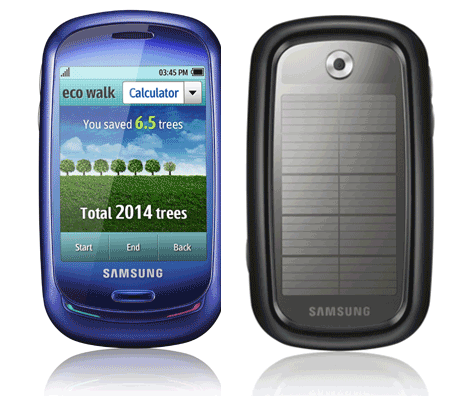 Lotsa cool-techology news today…
Lotsa cool-techology news today…
Next generation Windows-on-Mac.
Samsung’s cool E-Ink phone keyboard.
The trouble with 200-Mbps Internet.
 Lotsa cool-techology news today…
Lotsa cool-techology news today…
Next generation Windows-on-Mac.
Samsung’s cool E-Ink phone keyboard.
The trouble with 200-Mbps Internet.
[UPDATE: I credited Walt Mossberg with the column I mention below–wrong! The column’s called The Mossberg Solution, but it’s by Katherine Boehret. Corrected, and sorry about that.]
Walt Mossberg Katherine Boehret of the Wall Street Journal has reviewed Samsung’s LED TV 7000, the first set that supports the Yahoo Widget Engine platform for Internet-enabled applications that run right on the TV. Walt Katherine is impressed with Yahoo’s system, which is based on the cool Konfabulator, the application that started the whole widget craze a few years ago. I was impressed, too, when I visited Yahoo and got to try out the Widget Engine on a Samsung TV a few weeks ago. (Unfortunately, the Samsung set wasn’t ready for review in time for an article I recently wrote for PC World on ways to bring Internet TV into the living room, although I did squeeze in a mention.)
The Widget Engine is slick–the applets I tried reminded me of iPhone apps that happened to live on a TV rather than a phone. And the best thing about it is that it’s open: Anyone who wants to can build applications for it, and any application that anyone builds is available on any TV that supports the platform. That’s a far cry from most previous approaches to putting the Web and Web services such as Internet video onto TVs, most of which have been highly proprietary. (Panasonic’s Viera Cast is conceptually similar to what Yahoo is doing, but it’ll only deliver the services that Panasonic signs up–which means, so far, YouTube and a couple of others, with Amazon Video on Demand on the way.)
I’m not going to have a Widget-enabled TV in my living room any time soon, unfortunately–I don’t need a new TV, and Samsung’s set, at $3,000, isn’t an impulse item. But Yahoo has signed up not only Samsung but also Sony, LG, and Vizio to make Widget-ready sets. Those four companies are responsible for a sizable percentage of the TVs sold in this country, so chances are good that Yahoo’s software will be showing up on plenty of sets. If developers are as enthusiastic about the platform as electronics manufacturers are, the Widget Engine could end up being reason in itself to be tempted by a new TV.
 Happy Monday, everybody. Reading material:
Happy Monday, everybody. Reading material:
Wow, they still make mainframes?
Intel chip flaw is theoretical.
Samsung unveils 11-hour netbook.
The personal supercomputer is imminent.
 What I’m reading this morning:
What I’m reading this morning:
Twitter-like makeover for Facebook.
Ballmer: Windows Mobile needs work.
Amazon’s selling used video games.
Pogue slams Samsung’s Memoir phone.
Facebook spurns poor Ms. Batman.
Windows 7’s revamped UAC: useless?
 March? In. Like a lion!
March? In. Like a lion!
Skittles stages goofball Twitter stunt.
Apple desktop event rumors begin.
Microsoft scuttlebutt: Live Search revamp.
iPhone becomes an ancient Mac.
AT&T: bring back your handset?
Foxmarks becomes Xmarks, adds features.
 What’s up, ladies and gents?
What’s up, ladies and gents?
Google explains yesterday’s Gmail outage.
Google joins European Microsoft tussle.
Is your congressperson on Twitter?
Microsoft’s stock isn’t so hot.
Google updates Internet 6 Toolbar.
Samsung writes a Memoir (phone)
Nokia music phone hits stores.
Will the Kindle go international?
 Phones. More phones. Phones that look a lot like iPhones, except for the ones that don’t. Phones that may never show up in the good old US of A. Phones that are full of style, and ones that seem to be devoid of discernible personality. That, in short, was my Monday at Mobile World Congress in Barcelona, where I spent the entire day bopping from press conference to press conference, learning about new handsets from most of the major manufacturers (as well as laptop titan Acer, which announced today that it’s getting into the phone biz).
Phones. More phones. Phones that look a lot like iPhones, except for the ones that don’t. Phones that may never show up in the good old US of A. Phones that are full of style, and ones that seem to be devoid of discernible personality. That, in short, was my Monday at Mobile World Congress in Barcelona, where I spent the entire day bopping from press conference to press conference, learning about new handsets from most of the major manufacturers (as well as laptop titan Acer, which announced today that it’s getting into the phone biz).
I wrote about some of the day’s debutantes as I encountered them, but missed others. And while the show is teeming with journalists who are cranking out a surging sea of stories on all the announcements, I’m not sure if anyone’s trying to put as much as possible in one place.
So here’s a stab at a convenient, concise guide to nearly every new phone I encountered as of Monday evening (I left off a couple of far-off models which Acer mentioned only fleetingly and cryptically). Most of these phones have been announced only in GSM models, except for the two HTCs. Nobody revealed anything about American carriers today, although in some cases you might be able to make educated guesses.
The fact that a spec isn’t mentioned doesn’t indicate a phone doesn’t have it–in some cases, the manufacturers provided something less than full information, and I’m not trying to provide all the ones they did mention (all these phones have basic stuff like Bluetooth, and I stopped short of listing info like their dimensions and the media formats they support). If you know more about any of these models than I do, please speak up.
And one last note: Yes, I know that it’s increasingly tough to judge phones by their hardware specs. In the post-iPhone era, it’s the software that gives a handset much of its functionality and character. I didn’t get to touch most of these phones at all today, and certainly didn’t spend enough time with any of them to come to conclusions about the quality of their interfaces. But even today, specs and other basic facts mean something–and after the jump, I’ll give you plenty of ’em to chew on…
I’m at the Samsung press conference at Mobile World Congress, where the company is launching a mess o’ new touchscreen phones. It’s also previewing one it says won’t ship until the third quarter of 2009: Blue Earth, a phone that’s part of the company’s ecological initative. It’s made of recycled bottles and which charges off a solar panel built into its backside. The phone runs Samsung’s own OS, and other than that, details are scarce–you can probably figure out everything that’s public by examining the images below.

 Immersion is talking up the fact that its VibeTonz software — which allows the user to create personalized haptic effects — is shipped on one of the hottest new cellular phone in Korea right now, the Samsung Haptic 2. The device, which began shipping in late September, has already sold some 75,000 units in the first three weeks of release.
Immersion is talking up the fact that its VibeTonz software — which allows the user to create personalized haptic effects — is shipped on one of the hottest new cellular phone in Korea right now, the Samsung Haptic 2. The device, which began shipping in late September, has already sold some 75,000 units in the first three weeks of release.
Of course, haptics is nothing new in cell phones. The simple act of the phone vibrating when a call or message is received is the most recognizable form of the technology. However, here Immersion is taking this one step further.
Instead of the simple buzz-buzz, users would be able to create personalized effects which then could be applied to various events. For example, a text message could have its own distinctive buzz, while various phone calls could have different types of rings. Think of them as ringtones you can’t hear. (Hmm, i wonder where they got the product name from.)
Other methods of use in the mobile space are for mobile gaming, giving game developers the option to build in haptics to their titles, and tactile responses to touchscreen, keypad, and button presses. Users would have control over these effects through a graphical user interface.
While VibeTonz has made it into other phones — 30 million according to Immersion — the Haptic 2 marks the first time that users have actually had personalization options. The company’s mobile chief Craig Vachon says user-defined haptics are “a step toward a completely new type of user-generated content.”
Personalization is a hot thing as of late, and this certainly seems interesting. While all our phones buzz, actually having the capability to customize them is pretty nifty. It would alleviate the need to check your phone every time it vibrates, because you will know before you even reach in your pocket if its worth it to look or not.
![]() As I have pointed out in the past, streaming is probably the single biggest threat to Blu-ray overall. Well, it looks as if Samsung — the company thats already given the format just five years to live — is acknowledging that and trying to stay one step ahead of the curve by adding streaming capabilities to two of its players. This appears to be part of a bigger strategy by Netflix to get its software on more Blu-ray devices.
As I have pointed out in the past, streaming is probably the single biggest threat to Blu-ray overall. Well, it looks as if Samsung — the company thats already given the format just five years to live — is acknowledging that and trying to stay one step ahead of the curve by adding streaming capabilities to two of its players. This appears to be part of a bigger strategy by Netflix to get its software on more Blu-ray devices.
CEO Reed Hastings does acknowledge that the format’s install base is still extremely small, but expressed confidence in its earnings call earlier in the week that adoption would pick up. Either way, it is definitely a good move for either company.
Netflix gains another partner for its streaming service, which already includes Microsoft and the Xbox 360, LG, and Roku, which markets the Netflix set-top box. Blu-ray gains a partner which adds functionality to its players, making them more attractive to consumers.
Obviously, this does nothing to address the price issue of players, which is the single biggest obstacle for most. However, at the same time, it certainly adds more value to the player. This could help justify the high up-front cost for some.
